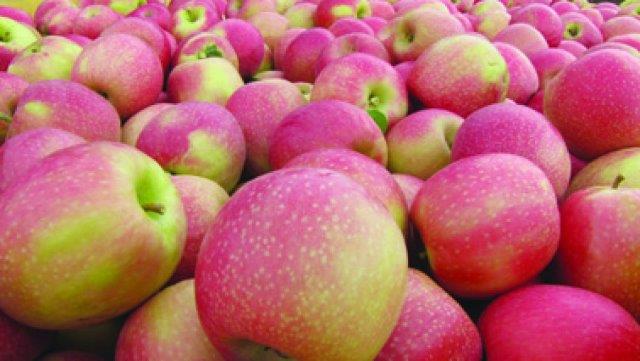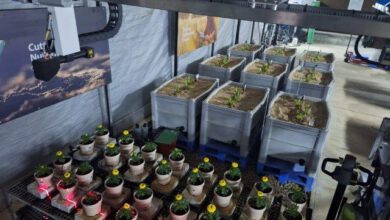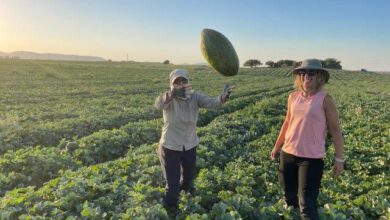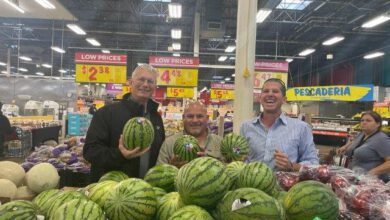Prevention of apple fruit cracking by strengthening skin resistance to growth strain
Fruit cracking is one of the main disorders limiting fruit quality and yield
Idit Ginzberg1,* and Raphael A. Stern2,3

.jpg)
the phenomenon of fruit cracking
fleshy fruits are covered with an outer protective layer known as peel, skin or rind, depending on the botanical definition. this layer may be thin, such as in grape, tomato or apple, or thick as in citrus fruits and pomegranate, where it consists of inner (white spongy tissue) and outer (colored) layers called albedo and flavedo, respectively. the peel should be able to resist the strain caused by growth but not limit fruit expansion, and at the same time provide protection against pests, pathogens and extreme environmental conditions.
fruit cracking is one of the main disorders limiting fruit quality and yield. the phenomenon occurs mainly in the pre-harvest stage and initiates at the surface of the fruit, where cracks traverse the cuticle and penetrate the inner tissues; extreme cracking can result in fruit splitting. cracks mar fruit appearance, allow water loss and pathogen invasion, decrease storage and shelf life, and therefore reduce fruit marketability. the cracking phenomenon affects many types of fruits: apple, sweet cherry, grape, pomegranate, persimmon, litchi, citrus and tomato, among others.
.jpg) |
figure 1. calyx-end cracking in ‘pink lady’ (left) compared to a normal fruit (right) |
apart from agricultural considerations, the cracking phenomenon, its causes and treatments enable a unique examination of peel characteristics at the cellular level. for simplicity, the peel is made up of one or two epidermal cell layers covered on the external side by hydrophobic cuticular matrix made up of cutin and wax, and underlain by two to three layers of hypodermal cells. lack of coordination between cuticle deposition and growth expansion of the fruit surface has been implicated in a number of surface disorders, including fruit russeting and cracking.
|
|
figure 2. strong correlation between the rate of fruits with calyx-end cracking at harvest and the duration of high temperatures at early cell division stage of fruit development. graph includes data of the years 2008 up to 2012 from 14 orchards at the north of israel that did not get any treatment. |
studies on berry fruit genotypes that are tolerant or susceptible to skin cracking have indicated that cuticle thickness and epidermal cell density are positively correlated with cracking resistance. these observations imply that manipulations of epidermal cell density and cuticle thickness and composition might enable strengthening of the peel and controlling cracking incidence.
 |
figure 3. reduced incidence of fruit with calyx-end cracking following ga4+7 and ba treatment (pgrs) compared to untreated control (c).data were analyzed for statistical significance by student’s t-test; different letters indicate significantly different values at |
apple skin as a model for studying peel cracking in orchard fruit
‘pink lady’ apple (malus x domestica borkh.) fruits are susceptible to physiological disorder of calyx-end cracking. the cracking appears towards the end of the growth period and develops as concentric cracks located around the stylar end of the fruit (figure 1). in israel, the incidence of cracking may reach up to 80% of the total yield. ‘pink lady’ is popular in many countries due to its pinkish color, crisp texture, and a high sugar:acid ratio; however the high incidence of cracking affects its marketability, resulting in substantial economic losses.
apple fruit development is characterized by a short cell-division phase followed by continuous cell expansion until ripening. we found that fruit exposure to a warm and dry climate during the cell-division stage resulted in increased cracking incidence that only became evident close to harvest time (figure 2).
 |
figure 3. reduced incidence of fruit with calyx-end cracking following ga4+7 and ba treatment (pgrs) compared to untreated control (c).data were analyzed for statistical significance by student’s t-test; different letters indicate significantly different values at |
recently, we applied a mixture of the plant growth regulators (pgrs) cytokinin 6-benzyladenine (ba) and gibberellins 4 and 7 (ga4+7) in order to reduce the incidence of apple cracking (figure 3). cytokinin and gibberellin are known to induce cell division and expansion in planta. multiple applications of ba+ga4+7 to ‘pink lady’ fruit at early phenological stages resulted in an immediate increase in epidermal cell density that was maintained in the ripened fruit (figure 4), and an associated reduction in calyx-end cracking disorder at harvest. interestingly, some of the epidermal cells appeared as cell clusters within the cuticular matrix and were detached from the native epidermal layer located at the bottom of the cuticle – this phenomenon was not detected in the untreated control fruits (figure 5).
 |
figure 5. increased number of epidermal cells in the peel of ga4+7 and ba (pgrs) treated apple fruits compared to non-treated control (c) as seen in light microscope. double-headed red arrows indicate cuticle thickness. in the control, triangle-shaped epidermis cells (rounded-tail arrows) are situated at the base of the cuticle. pgr-treated peel contains clusters of epidermal cells (blue arrows) that are detached from the native epidermis and hypodermis layers. the cuticular matrix of untreated control fruits is devoid of these cell clusters. bar = 50 μm |
increased epidermal cell density reinforces the peel by adding more cell-wall components, thickening the cuticle layer and possibly enhancing crack repair. although spraying is performed at an early stage of fruit development, its effect is maintained in the mature fruit, allowing the skin to resist high tension due to intensive fruit expansion or stressful environmental conditions. following the positive results of the research, a protocol of ba+ga4+7 application in commercial orchards was established with similar success.
1 institute of plant sciences, agricultural research organization, volcani center
2 migal, galilee technology center,
3 department of biotechnology, faculty of life sciences, tel-hai college
* corresponding author: e-mail: iditgin@volcani.agri.gov.il

.jpg)



